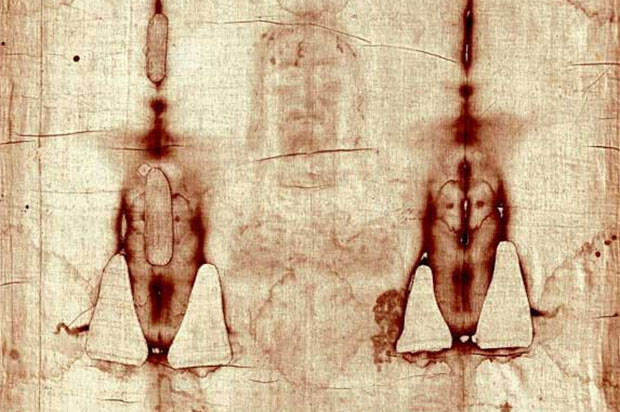Today’s technology can do amazing things: phones take photos; cars park themselves. Yet, researchers still have not developed a device that can definitively pin down the origins of a famous image on a piece of cloth. The Shroud of Turin continues to puzzle many believers and scientists alike, and even major investigations have failed to provide a conclusion that satisfies everyone. From CNS:
Barrie Schwortz was the documenting photographer for the Shroud of Turin research project in 1978, an in-depth examination of what many people believe to be the burial cloth of Jesus.
Raised in an Orthodox Jewish home, "it took me a long time to come to terms with the fact that I'm a Jew and involved with probably the most important relic of Christianity," Schwortz told Catholic News Service.
"Isn't it funny how God always picks a Jew to be the messenger," he said.
Schwortz said that he, along with the other members of the research team who came from various faith backgrounds, had to set aside personal beliefs and focus on the shroud itself rather than any religious implication it might carry.
"We were there to gather information ... to do empirical science and do it to the best of our abilities," Schwortz said. "It doesn't have anything to do with my personal religious beliefs. It has to do with the truth....We could tell you what [the shroud is] not -- not a painting, not a photograph, not a scorch, not a rubbing -- but we know of no mechanism to this day that can make an image with the same chemical and physical properties as the image on the shroud."
Several experiments in 1988 used carbon testing to date the shroud to the 13th century, leading many to conclude that it is a fake. However, the latest study argues it's much older. Pope Francis, in his recent commentson the cloth, refrained from weighing in on its authenticity (although some noted his description of the image as an icon rather than a relic). Rather, he implied that the question of how it was made is less relevant than the question of why people still are drawn to it:
"How is it that the faithful, like you, pause before this icon of a man scourged and crucified? It is because the Man of the Shroud invites us to contemplate Jesus of Nazareth.... This disfigured face resembles all those faces of men and women marred by a life which does not respect their dignity, by war and violence which afflict the weakest… And yet, at the same time, the face in the Shroud conveys a great peace; this tortured body expresses a sovereign majesty."
The shroud, in part thanks to the debates surrounding its authenticity, is a reminder of the mysteries that remain within our faith, and the image upon it reminds viewers of the suffering that many have endured because of their faith. Schwortz sought the truth through science by putting aside his biases. In a similar spirit, we must be willing to let go of our own desires and beliefs as we seek the great truths of our faith through Christ. We must always be ready to put aside the assumptions we carry—our prejudices and personal biases—and to be open to the God of surprises and to greater truths, miraculous or not.








